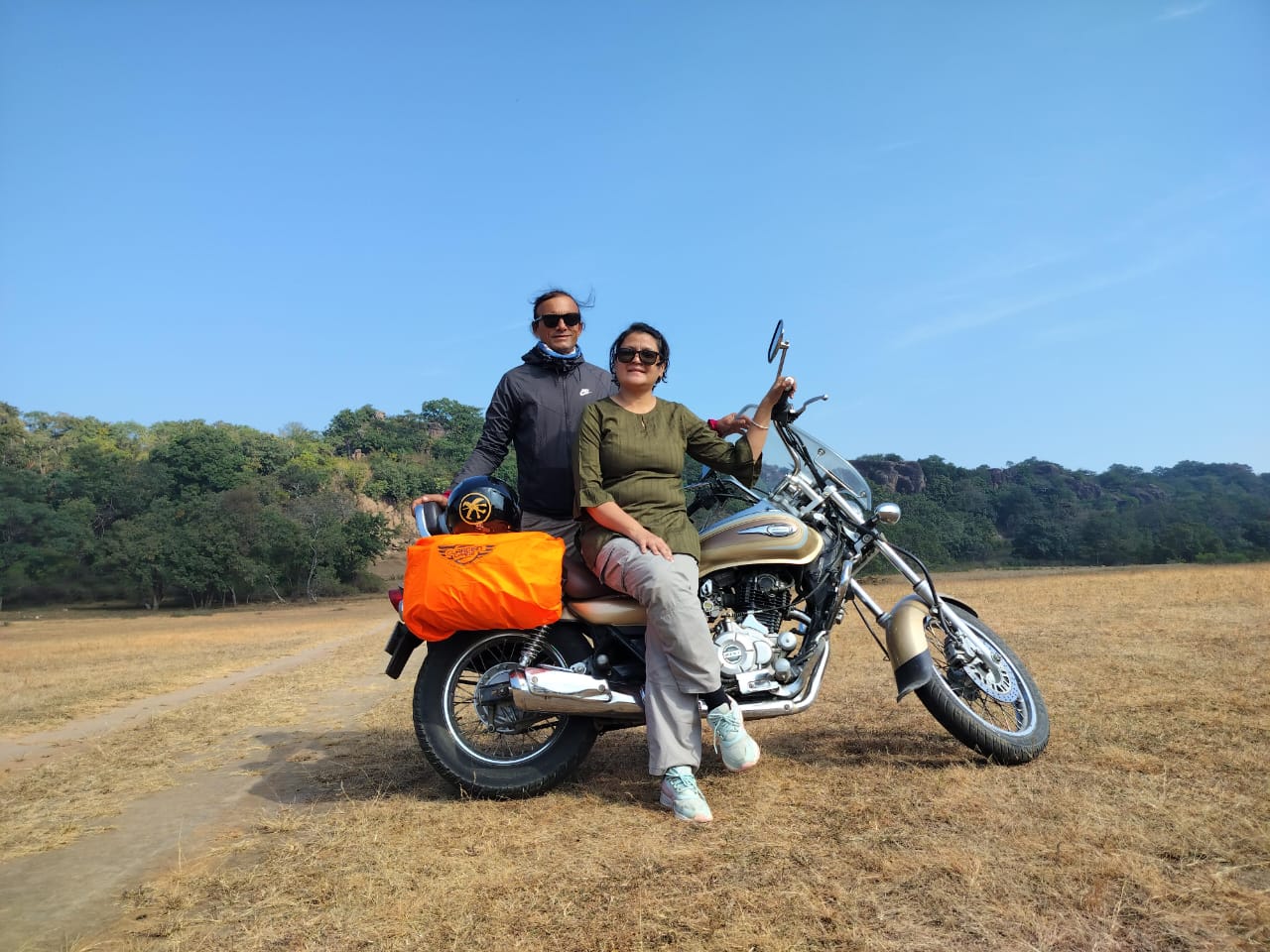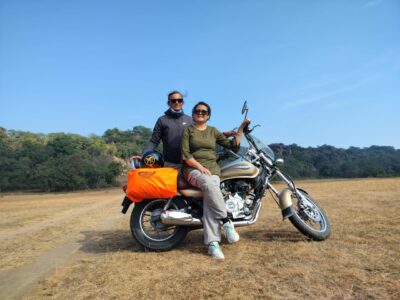
Chesterton, the English philosopher and author, once said, “The traveler sees what he sees. The tourist sees what he has come to see.” And if you really want to see – you need to travel mindfully. For mindful travel, you need to surrender your ego and pretensions; your need to prove your imagined worth and urge to instagram everything for validation; your desire to hurry back home and boast about it over a chilled margarita; and above all – your pace. While there is nothing better than walking to do that, but if the canvas is wider and the path longer, then ride the motorcycle.
The whole idea of a motorcycle is to slow down and to scale down. Motorcycling will bring you in direct contact with the elements, and hence the need to slow down. If you are in a hurry, take a cab. A few weeks on the road on a motorcycle will also scale down your life – in terms of the luggage you can carry on the bike, and the baggage you carry on your mind. It pulls you away from your past and future to bring you into the present – the only place where life actually exists.
When you ride in a small group of two or three bikes for a few weeks, avoiding major highways, with a relaxed itinerary of just two to four hours a day at a leisurely cruising speed interspersed with plenty of breaks, it’s what we call a soul ride. In a soul ride, one makes peace with the pace and focuses on the journey and not the destination as the initial excitement fades into a meditative state of being, and brings one face to face with what really is important in life.
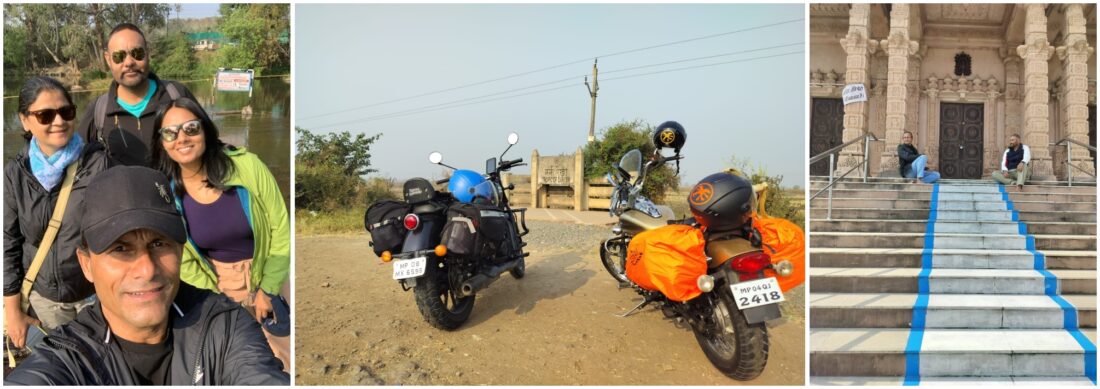
And so, it was on motorcycles that we rode out from Bhopal on a clear winter morning in mid-November for a three weeks long soul ride across central India, two retired couples looking for some soulful travel on motorcycles. We had flown in a couple of days earlier and stayed at Lago Villa, a rather quaint and quiet homestay on the Upper Lake, ideal for watching glorious crimson sunsets, strolling on the lake track, testing out the bikes across local sights like the Jain temple and Tribal museum.
Madhya Pradesh is literally the heart of India. The intermingling of Caucasian, Mongoloid, Dravidian, and even the tribal influence is visible, in turns. The great Narmada river runs laterally through it, formally defining the country into “north” and “south”. The Tropic of Cancer runs through its centre, making it the centre of Northern Hemisphere. Our route would take us over all of its regions – Malwa plateau, Bundhelkhand plateau, Chambal, Vindya range, Mahakoshal and Satpura range. It would take us through three UNESCO world heritage sites, six tiger reserves and two legendry rivers, amongst others. The Mahakal corridor on the western edge of the state was the only segment that was going to be missed out; to be done in an another ride.
Carefully avoiding the main highway, and navigating through the narrow streets of old Bhopal suburbs, we struck out on the quiet road to Sanchi. Before long, the familiar sights of black soil, small tilled fields surrounded by rolling hills, functional streams with pools of water, kingfishers, larks, drongos and francolins amongst the bushes and red tiled roofs rolled in. I felt a sense of relief that the basic character of the region that had enthralled me as a starry eyed student over four decades ago had not been sacrificed for development. I pointed all this out to Shalini, who patiently nodded; spouses repeatedly hear each others’ versions of memories and places before they actually experience it, and all that is left to do is nod.
The Tropic of Cancer crosses the road enroute, prominently marked on the map and the road, so it’s almost impossible to miss. Two large stone boards with broad lines marked on the road is all it takes to bring one face to face with the magnificence of the concept, and the insignificance of one’s place in the universal scheme of things. An hour out, we entered the Sanchi Stupa complex. The way the entire area is laid out, including the approach, does justice to its status as a UNESCO heritage structure. A comparison with the original ruins when discovered by the British and the current status reveals the inordinate amount of effort that has been put in. Sanchi also has the Udaigiri caves and the Herodotus pillar. We stayed at Madhya Pradesh Tourism’s (MPT) Jungle Resort, which was right under the shadow of the Udaigiri caves in a carefully created bamboo forest.
The next day, after a quiet ride we entered Sagar from the sout-west and were immediately overwhelmed by the local traffic. Sagar, or Saugor, as it was earlier known, is one of the many cantonments made by the British at scenic locations across India. Little surprise then that our stay at the cantonment was in a refurbished erstwhile British prison cum ammunition store now called Virasat. We spent an extra day to meet up with old classmates and coursemates to refresh our salad days. We also visited Akash’s Organic farm which is known all over the country for its highly productive vertical organic farming method.
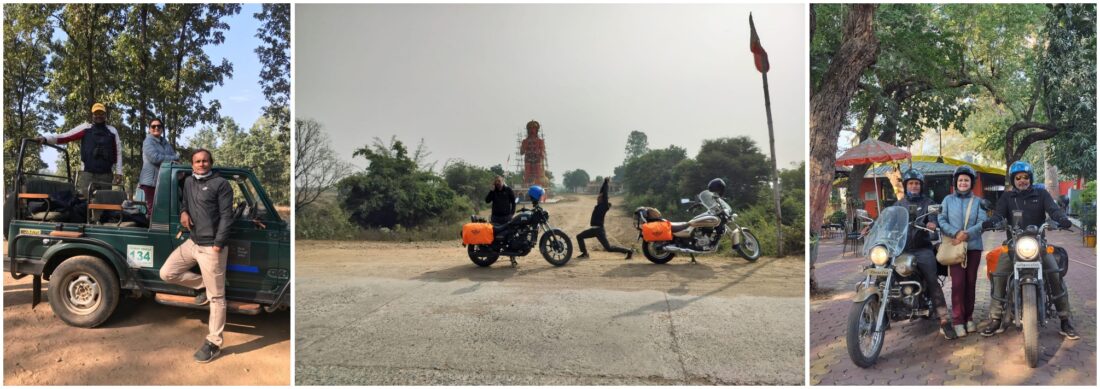
The rolling hills of Bundelkhand were a sight to behold the following dawn as we headed north for Chanderi, the legendary capital of the Pratihara and Bundela rajput clans. In 1342 AD, Ibn Batuta recorded it as a sprawling city, and its riches drew the Afghans and Mughal Babar in repeated conflict. Tales of tunnels being dug in one night at Kati Ghati for siege, and the thousands of lives lost defending it at the aptly named Khooni Darwaza make Chanderi Fort one of the most haunted in India.
The ride took us through the massive expanse of Lalitpur lake, country roads quaintly jammed with cattle, the first crossing over the holy Betwa river and into Pranpur craft tourist village where the looms spin out world famous Chanderi sarees. We climbed up to Kila Kothi, the MPT resort right inside the haunted fort where we stayed for the night. Visits to local sights through the stone cobbled streets of the town, a remarkable light and sound show in the evening, late night sounds of kawwali and nautanki below, and a dawn tribute at Khooni Darwaza and Sati pond left us in a reverie as we rode out for Orchha on the Chambal frontier. The ghosts spared us, much to our disappointment.
The highway transitioned into a wider expressway as we rode on towards Babina. On the outskirts, a friend met us for a cup of tea and rode with us for a few miles on his Harley Davidson as a gesture of comradeship. Orchha is a forlorn cousin of Jhansi, right outside its limits but represents old world charm, the way the latter cannot. We stayed at Bundelkhand Riverside, the renovated hunting lodge of the Maharaja of Orchha, which is probably the best way to experience Betwa river at its playful best. The river flows into rapids created by ancient rocks, which conjures up an ethereal mist all over it from dusk to dawn. The highlight of the evening were the glorious high multi-terraced quaint chattri temples and the guard of honour presented by the State Police to Lord Rama during the traditional evening aarti. Rama is treated as a king here, unlike the rest of India, the priest told us.
The following day, having dined at the royal buffet table, we hit the expressway early for our ride to Panna Tiger Reserve. The magnificent open expressway gave us speed but no soul, and just as we were being overtaken by monotony, the dry plateau began to give way to the Vindhya hills again. We crossed the Karnavati river to arrive at our stay, Mandal Tourist Village. Our host was a safari guide who runs a pretty homestay on the edge of the village in the Panna buffer zone. With a traditional welcome by his wife and daughter, we felt right at home when checking into their terrace rooms. During the two days stay here, we immersed in the legendary architecture and lore of the UNESCO heritage Khajuraho temples and the quaint vibes of Panna Tiger Reserve. If you still believe that our cultural heritage was conservative and patriarchal, a few days immersion here is what the doctor may just order. Panna, apart from the diamond mines, stands out for its very successful tiger conservation effort – from zero in 2006 to over 300 plus today. The nucleus itself was drawn from the other more legendary tiger reserves in the state.
We moved on to Rewa after two days. En route, we had the good fortune of meeting up with former comrades, now retired, whom I had reached out to earlier. An unremarkable town, especially since the royal palace is not available or maintained for staying, we decided to stay in the sub-urbs at a resort near the White Tiger Zoo at Mukundpur, which is the main attraction. As an open zoo, not unlike Jurrasic Park, complete with a vehicle safari in its expanse, the much heard of white tigers give an audience to the visitors , especially since the safari route winds through the spots where the occasional drops of meat is done. We stayed at the adjacent quiet MPT resort, currently on lease, which turned out to be colder than all the earlier places we had stayed at. Bagheli chicken cooked in raw spices added a warm flavor to the laid back day.
Carefully avoiding the main axis, we rode out through a lesser country road through scenic vistas to Bandhavgarh next day. Our ride took us through large tracts of reserve forests which would henceforth intermittently form a virtually continuous forest belt for over 1500 kilometers, right until the end of our trip. We descended over 2000 feet from the Vindyachal hills into the Maha Koshi tract through classic central India landscape before entering the buffer zone of Bandhavgarh Tiger Reserve and riding on a very well maintained white top for over 75 kilometers. The reserve is not only known for being the Maharaja of Rewa’s private hunting forest, but also the legendary fort which Laxman used as an outpost during Lord Ram’s crusade. As one of the older tiger reserves in the country, we made it a point to savour its vibes by staying near Turia gate at the Maharaja Kothi hunting lodge which boasts of live fireplaces and a 500 years old banyan tree with over fifteen odd secondary roots turned trees. Enroute, we halted at Manpur, an ancient market of sorts where an incredible variety of forest produce including rare herbs were available.
It was a cold, clear dawn and with the longest day ride of the tour at 175 kilometers ahead, we left early through herds of cheetals frequently crossing the road. As we headed southwards, we once again crossed the Tropic of Cancer near Umaria, making us reminiscence about our previous encounter. We skipped the main highway and took an eastward country road, scenic, smooth and low on traffic. We weren’t disappointed. The landscape graduated into low rolling fields surrounded by forested glades, very much like the Alders paintings series by Van Gogh in South France. We had to halt and take in the ethereal sights at Harduli, a picture perfect hamlet with a traditional village scene complete with young belles washing clothes on the stone ghats of a small lotus lake surrounded by ancient banyans. In a major campaign of sorts, every pond or water body in the state has been cleared of the invasive hyacinth and replaced with the indigenous lotus, making them clearer, scenic and sustainable. The terrain began sloping down gradually towards the legendary Narmada valley that defines the Mahakoshi region prompting us to halt at least thrice to photoshoot memories.

As per advice of a local regimental officer, we skirted Jabalpur town from east and rode into the MPT resort at Burgi Dam on Narmada, about twenty kilometers south of the town. Rooms overlooking the magnificent lake with sunlight pouring through the large south-east facing glass doors greeted us. Not to lose an opportunity, we grabbed the sunset cruise boat and spent a rather lovely hour sailing on the waters, duly enthralled by river terns escorting us as the sun set even as the local weekend young tourists remained busy in taking Titanic style pictures and dancing to Bollywood numbers on the deck. It was dark at night being amavasya which made us make a mental note to come again on a full moon night.
Narmada river starts at Amarkantak and flows westwards right till the Arabian sea in Gujrat. It is the official feature that defines North and South India geographically. As a mother goddess, like Ganga, there are various legends associated to it, mainly related to Shiva, and even Brahma. We were to travel along Narmada’s ecosystem for most of the remaining ride.
It was a two nights’ reset halt, so we followed our respective routines the next morning – a long, slow sixteen kilometers run for me to shake off the stiffness. With a five kilometers long embankment, the dam is gigantic an especially suited for a meditative run. The 300 feet drop to the river downstream and the seemingly infinite expanse of the calm waters upstream as a fishing boat was illuminated by the riding red sun made it all the more memorable. After breakfast, we drove down by cab to Bhedaghat marble rocks and waterfalls bypassing the town from south. A rather outspoken boatman cum guide amused us with outlandish tales of film shootings there before we climbed up and spent some mindful moments at the 64 yoginis temple, one of the four in the country, and our focus as yoga teachers.
The next day’s ride was extended by half an hour as we chose the eastern white top highway through Mandla and got channelised – quite happily – into a road laced with small hamlets. We set up camp in the extensive bamboo grove cottages of Mahua Tiger Resort at Mocha village in Kanha Tiger Reserve. A warm, campfire dinner was followed by an early morning wake up call for the safari. As one of the larger and older tiger reserves in the country, Kanha holds a special place in every wildlife enthusiast’s itinerary. Just as dawn was breaking, we entered from Khatiya gate alongwith a horde of over 35 safari gypsy jeeps to discover a land that probably belonged to a jungle safari novel of an another era. Fragrant and green foliage, bubbling brooks, massive rocks, dew soaked tracks with giant pugmarks of tigers, expansive grasslands around small lakes, and amongst these were fauna of every description – barasinghas, sambhars, cheetals, kakkars, boars, bisons, foxes, turtles, drongos, hornbills, orioles. But the tigress with her cubs who had dragged a kakkar into cover the previous day remained out of direct sight even as her movement was persistently given out by the langurs, cheetals and babblers. A romantic field breakfast at one of the ranger outposts added deep colour to the four hours long foray into the jungles immortalised in ancient Indian scriptures and later Kipling’s writings. The evening was spent at a warm campfire after a visit to all the lovely resorts in the area.
The two nights at Kanha brought us closer to earth making us notice, as the misty morning dawned, dew dripping from bamboos, calls of magpie robins, flameback woodpeckers, crow pheasants, crickets, and roosters. After posing yet again for a souvenir riders picture for the owners’ benefit – fifth time now – we left early for Pench Tiger Reserve. Our ride took us along the beautiful, lonely, buffer zone road winding through sal forests and flowing streams before hitting the Jabalpur – Nagpur Expressway at Seoni, the much mentioned town by Kipling. The highway passes through the buffer zone of Pench on an elevated corridor, an engineering and conservation marvel, the wildlife free to pass underneath it undisturbed by movement, sights and sounds. We holed up at Pench Tiger Homestay right next to the quiet Turia gate with an impressive wooden machan overlooking a pond behind it and we made appropriate use of it after a long evening walk along the very well maintained road with a new moon on the horizon.
We rode out the next morning heading due north towards Chhindwara but had to retrace our route since Google navigation took us right into the restricted core zone of Pench which added over 30 kilometers to our route. We ended up riding back on the expressway till Seoni before veering due north west through Chhindwara, a very well known cultural hub town, very clean, and very reminiscent of Chanderi. We entered into the Satpura range on a gradually ascending and winding road through grand teak jungles before the plateau leveled off short of Motel Tamia, our night halt. The motel is actually a well constructed MPT property on lease to a private agency doing a great job of running it. Our day was spent lounging on the very well manicured lawns, walk upto the sunrise point and stargazing for planets around the new moon. The night was very quiet and dark with no traffic on the highway; there’s a reason Tamia hills are well known.
We spent a leisurely morning after a quiet dawn, watching drongos, frolicking around with the manager’s retriever and a slow breakfast. We crossed over to the north side of Tamia hills descending into a beautiful, forested and fertile valley through some impressive cliff viewpoints before entering Naramadapuram Satpura Tiger Reserve – the fifth on our route – halting often for photoshoots on old stone bridges on flowing creeks. Finally, we began rapidly ascending over 3000 feet on a narrow circuitous road amongst narrow cliff ridges before entering Pachmarhi, the famed British cantonment town. It was very much like our ride through Ooty early in the year but the pines were replaced by teaks. We stayed at Club Lake View, a British era MPT property near the ancient church on the Mall Road and spent our day walking around the town to the lotus covered lakes, markets and clubs, the retreat bugles of the Army’s quarter guard adding to the colonial air.

The last stop of our ride – Bhimbetka Rock Shelters – beckoned as we made the made the most of MPT’s sumptuous breakfast and descended back through the circuitous road into the valley floor upto Matkuli and its expanse of beautiful forested hamlets. Taking the scenic road, we left the main road and rode along a rather well maintained but narrow country road through Satpura Tiger Reserve buffer zone upto Narmadapuram after crossing over two tributaries of Narmada and gifting a chocolate to a five year old who insisted on spelling his name while his father was giving us directions. The Bhopal Expressway was thereafter an uneventful ride interrupted by construction activities until we reached Highway Treat, a unique MPT facility complete with a lively café built on an erstwhile railway platform barely 20 meters from the main line, where we settled for the night. Dating back to around 60 BCE, Bhimbetka rocks were the last of the three UNESCO World Heritage sites of Madhya Pradesh we visited, albeit with a wary eye – a tiger had migrated outside the core zone and motorcycling across the open five kilometers stretch upto it was not exactly recommended. With assurances of no halts enroute, we rode in and spent the better part of our noon walking through the aisles of the pretty colony of rock shelters laced with articulate paintings, carvings and caves overlooking the landscape around it. During the night, over 100 trains passed through the main line surprising and shaking us each time and giving us a sense of deep immersion into the life of a railway gate guard.
The final morning of our 21 days ride dawned on us quietly, meditatively and after an hour long steady ride on the expressway we eased into Bhopal from the south as the morning office traffic was just building up. The day was spent in returning the motorcycles, getting clearance, chatting with the host at Lago Villa, basking in the noon sun on the lake listening to a group of young singers at a guitar jam, and finally watching the glorious sunset over the lake with the sense of dismay as the colourful soul ride ended. But for the hosts’ two dogs who escaped early next morning because of our fault and found only in the evening, everything was quiet and peaceful as we exited Bhopal by air with memories of a forgotten land that holds the soul of India.
The long ride changes you, as we have repeatedly experienced during our other soul rides across Malabar coast, Coorg plateau, Nilgiri hills, Thar desert, and Brahmaputra valley. Apprehension gives way to anticipation, ambiguity to acceptance, angst to relief, black and white to colour. It fills your heart with a sense of life and the your mind with exquisite stories of the time spent on the road.
And in the end, all we really have is our story.
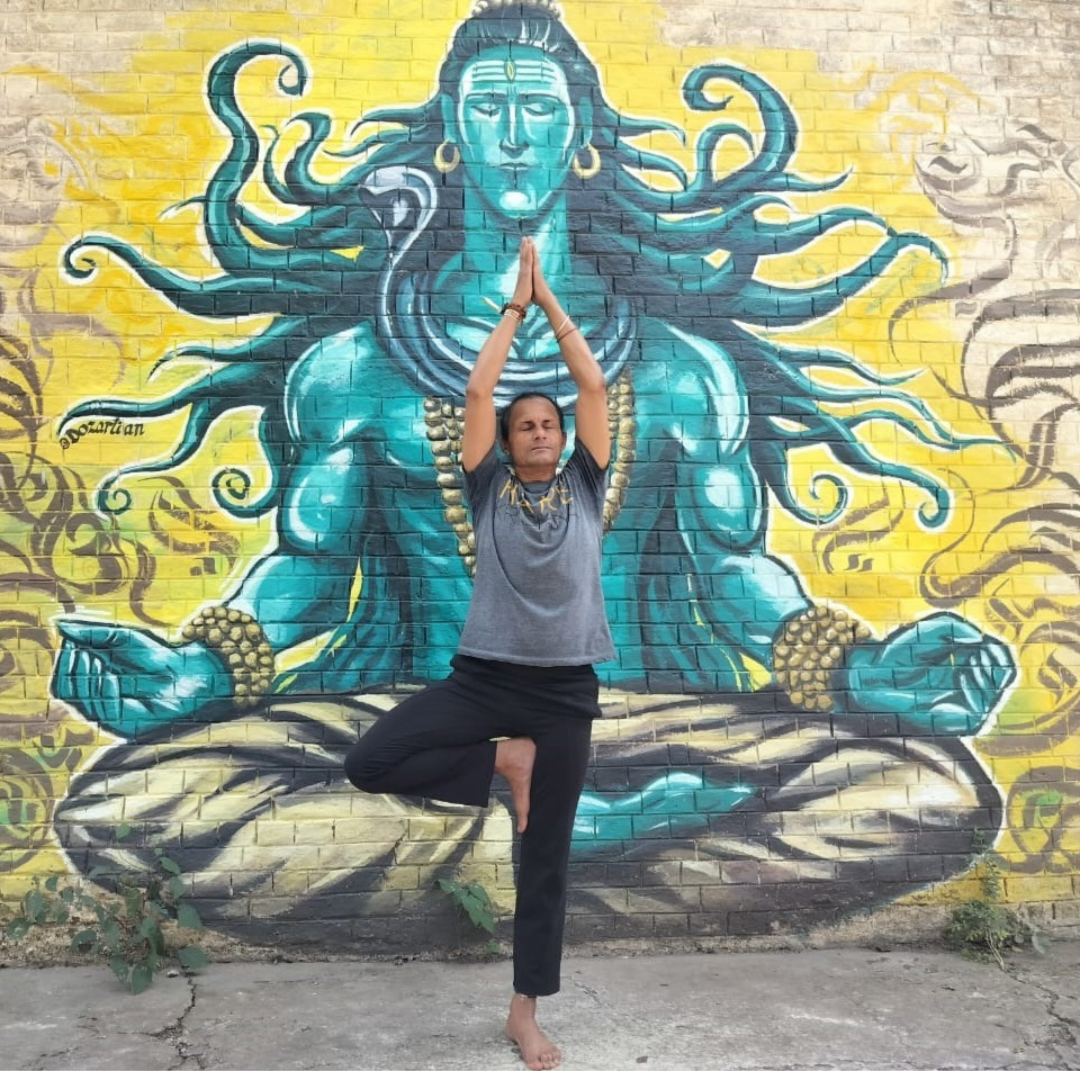
Vinay Nagyal
Vinay Nagyal is a retired Indian Cavalry officer. An ultrarrunmer of the 100 miler league, author of the critically acclaimed Malana Cream, yoga teacher at Idayogashala DLF Valley and a permaculture farmer , he is an avid supporter of old fashioned slow soul travelling on foot, motorcycle or otherwise. You can follow his projects on instagram – Idayogashala, mornihillspermaculturecentre and mornihillswelfarefoundation.
